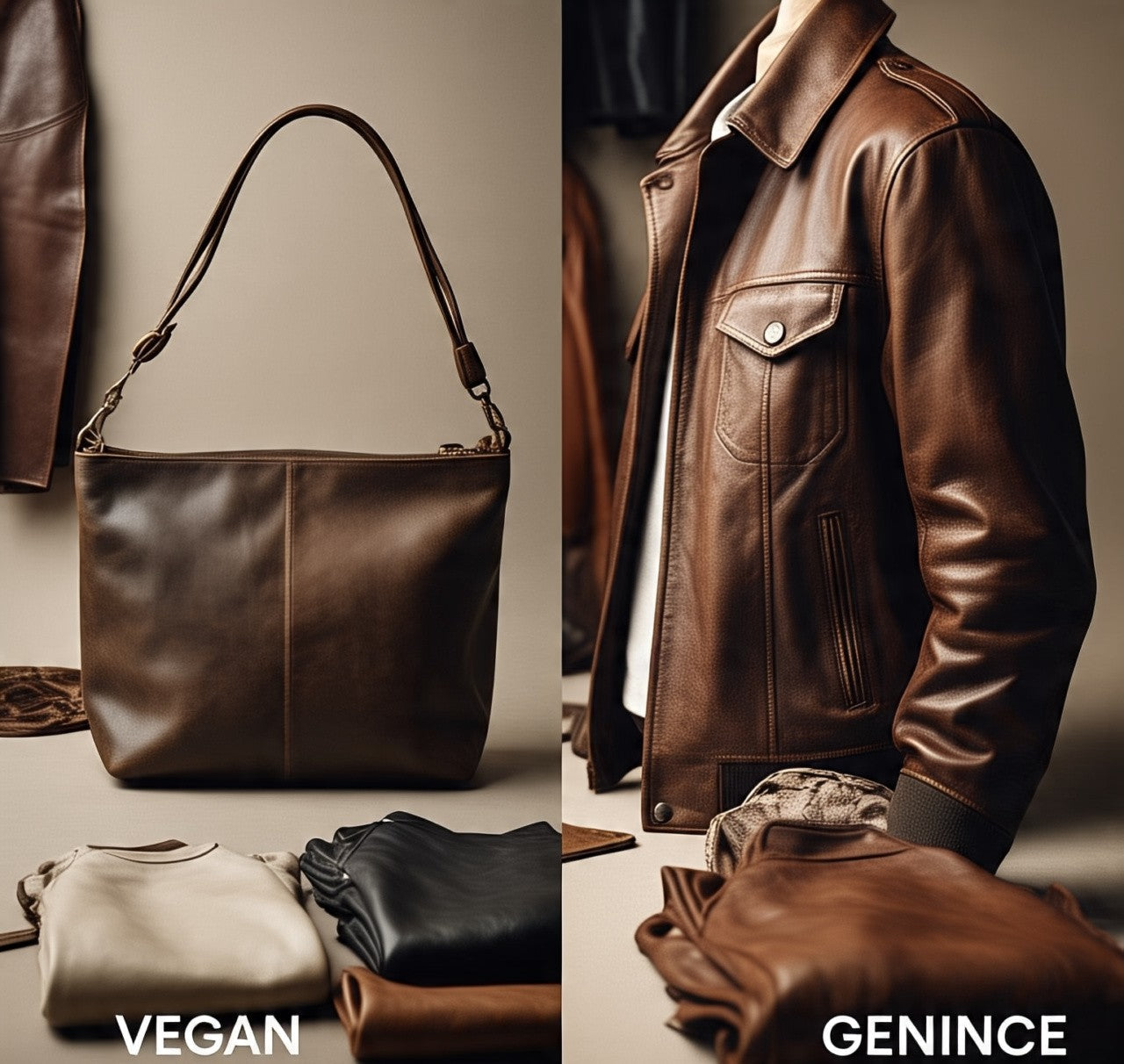Vegan Leather vs Real Leather: Which is Better for You?

In today's world, the choices we make about the materials we use in fashion and other industries are more important than ever. One debate that often comes up is Vegan Leather vs Real Leather. Whether you're an environmentalist, fashion lover, or someone curious about sustainable choices, this article will help you weigh the pros and cons of both.
What is Real Leather?
Understanding the Origins and Production of Real Leather
When we think about real leather, we usually imagine a material that's been part of human culture for centuries. But what exactly is real leather? It’s a natural product made from animal hides, usually from cows. The process of turning animal skin into durable leather involves tanning, where chemical or natural agents are used to make the leather durable and soft.
Types of Real Leather
There are various types of leather depending on how the animal skin is treated. Some of the most common types are:
-
Full-grain leather – the most durable and strong type of leather.
-
Top-grain leather – a slightly thinner and more flexible version.
-
Genuine leather – often considered lower-quality than full-grain or top-grain.
-
Bonded leather – made from leftover leather scraps.
Each of these types of leather has unique properties and is used for various products, from furniture to fashion accessories. But they all share a common feature: they’re made from animal hides.
Vegan Leather Explained
What is Vegan Leather Made Of?
Unlike real leather, vegan leather isn’t derived from animals. Instead, it’s made from synthetic or plant-based materials. The two most common types of vegan leather are polyurethane (PU) and polyvinyl chloride (PVC). These materials can mimic the look and feel of real leather without the need for animal products.
Types of Vegan Leather
Vegan leather comes in many forms, with advancements making it more realistic and durable than ever. Here are a few types:
-
PU Leather – Made from polyurethane, which is a plastic coating on fabric.
-
PVC Leather – Made from polyvinyl chloride, which is less flexible but more water-resistant.
-
Pineapple Leather (Pinatex) – A sustainable option made from pineapple leaf fibers.
-
Mushroom Leather (Mycelium) – A biodegradable option made from mushrooms.
These options give consumers a range of choices when looking for ethical, sustainable alternatives to traditional leather.
Durability: Vegan Leather vs Real Leather
How Long Does Each Type of Leather Last?
When comparing vegan leather vs real leather, one key consideration is durability. Real leather is known for its longevity. If cared for properly, leather products can last decades, even getting better with age as they develop a patina. This is one of the main selling points of real leather.
On the other hand, vegan leather doesn’t have the same long-lasting reputation. While some types, particularly higher-quality PU leather, can last several years, it doesn’t usually age as gracefully as real leather. Over time, it can crack or peel, making it less durable in the long run.
That said, not all vegan leather is created equal. Some of the newer plant-based leathers, like Pineapple leather and Mushroom leather, are showing promise in terms of durability and sustainability.
Environmental Impact
Is Vegan Leather More Eco-Friendly?
One of the biggest arguments in favor of vegan leather is its environmental impact. The leather industry is notorious for its carbon footprint, as raising livestock for leather contributes significantly to greenhouse gas emissions. Moreover, the tanning process involves harsh chemicals that can contaminate water sources.
In contrast, vegan leather, especially the plant-based kinds, has a much lower impact on the environment. For example, Pinatex (made from pineapple leaves) utilizes agricultural waste, making it a sustainable and eco-friendly option. Similarly, Mushroom leather is biodegradable, which means it won’t contribute to landfill waste.
However, it’s worth noting that synthetic vegan leathers made from PVC and PU do have environmental drawbacks. The production of these plastics relies on fossil fuels, and the materials themselves are not biodegradable. This means they could still contribute to environmental issues, like plastic pollution.
Ethical Considerations
Which Option is More Ethical?
For many people, the ethics of vegan leather vs real leather is a driving factor in their choice. Real leather comes from animals, which raises concerns about animal welfare. Even though leather is often a byproduct of the meat industry, many people choose to avoid it due to concerns about the treatment of animals in factory farming.
In contrast, vegan leather offers an animal-free alternative. No animals are harmed in the production of vegan leather, making it the clear choice for those who prioritize ethical fashion. However, as mentioned earlier, not all vegan leather is created equal. Synthetic options made from plastics can raise ethical concerns about the environmental impact.
Aesthetic and Feel
Does Vegan Leather Look and Feel Like Real Leather?
A big question when comparing vegan leather vs real leather is whether vegan leather can mimic the luxurious look and feel of real leather. While early versions of vegan leather felt stiff and artificial, recent advancements have made it difficult to distinguish between high-quality vegan leather and real leather.
Real leather is known for its rich texture and the way it molds to the body over time. It’s also breathable, which makes it more comfortable in certain applications, like shoes and clothing.
Vegan leather has come a long way in replicating these characteristics. High-quality PU leather, for instance, can be almost indistinguishable from real leather at first glance. However, it doesn’t have the same breathability, which can make it less comfortable over extended wear.
Cost Comparison
Is Vegan Leather Cheaper Than Real Leather?
When it comes to cost, vegan leather is generally more affordable than real leather. This is because the production of vegan leather, particularly synthetic versions like PU and PVC, is less resource-intensive than raising animals and processing their hides.
However, the price can vary significantly depending on the type of vegan leather. Plant-based options, like Pineapple leather and Mushroom leather, can be more expensive due to their sustainable production methods.
Conclusion: Which is Better?
Vegan Leather vs Real Leather: Final Verdict
The decision between vegan leather and real leather ultimately depends on your priorities. If you value durability and a classic feel, real leather might be the better choice. It lasts longer and develops character over time. However, if ethics and sustainability are your top concerns, vegan leather, especially plant-based options, could be a more suitable option.
It's also essential to consider the environmental impact. While traditional leather has a larger carbon footprint, not all vegan leathers are created equal. Opting for sustainable, biodegradable versions is crucial if you’re looking to minimize your environmental impact.
At the end of the day, both materials have their advantages and disadvantages. As consumers, it's about making informed choices that align with your personal values, whether that’s supporting sustainable fashion, choosing ethical products, or investing in long-lasting materials.


Comments